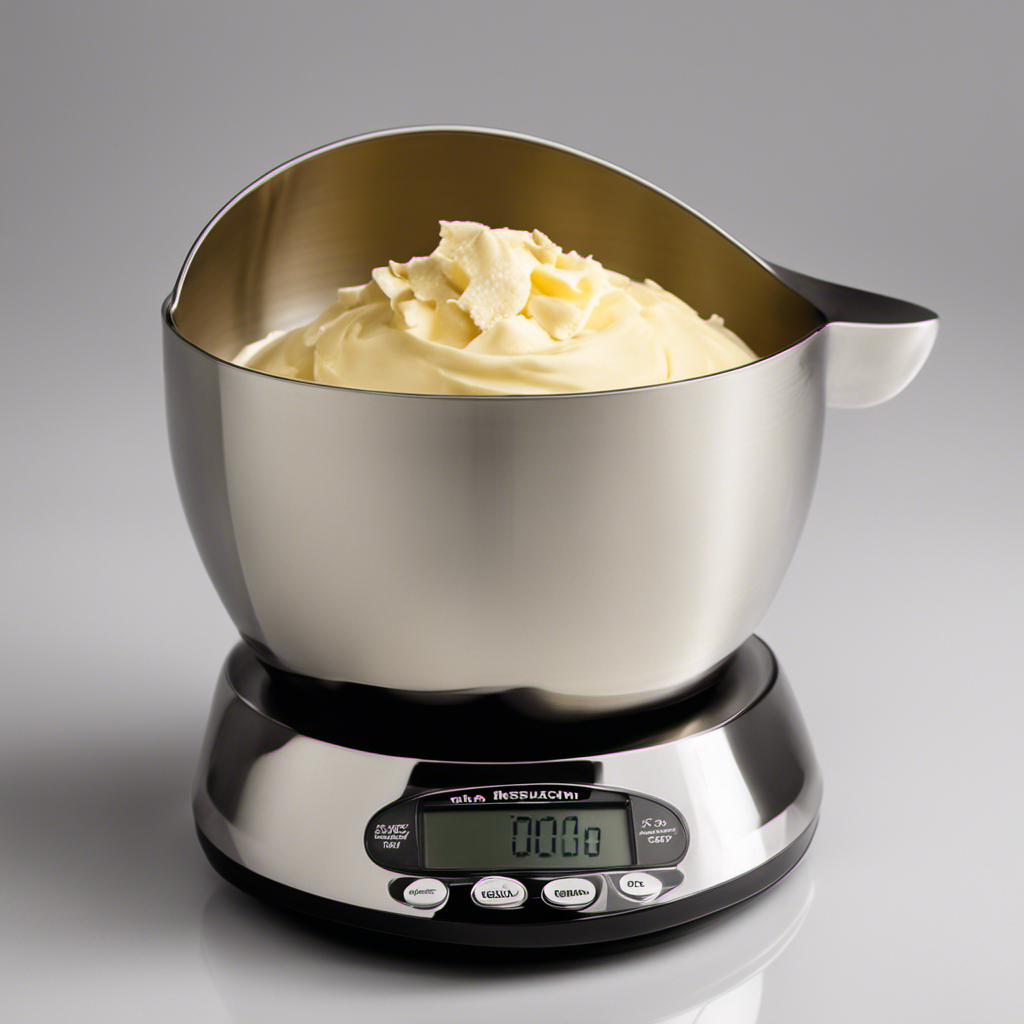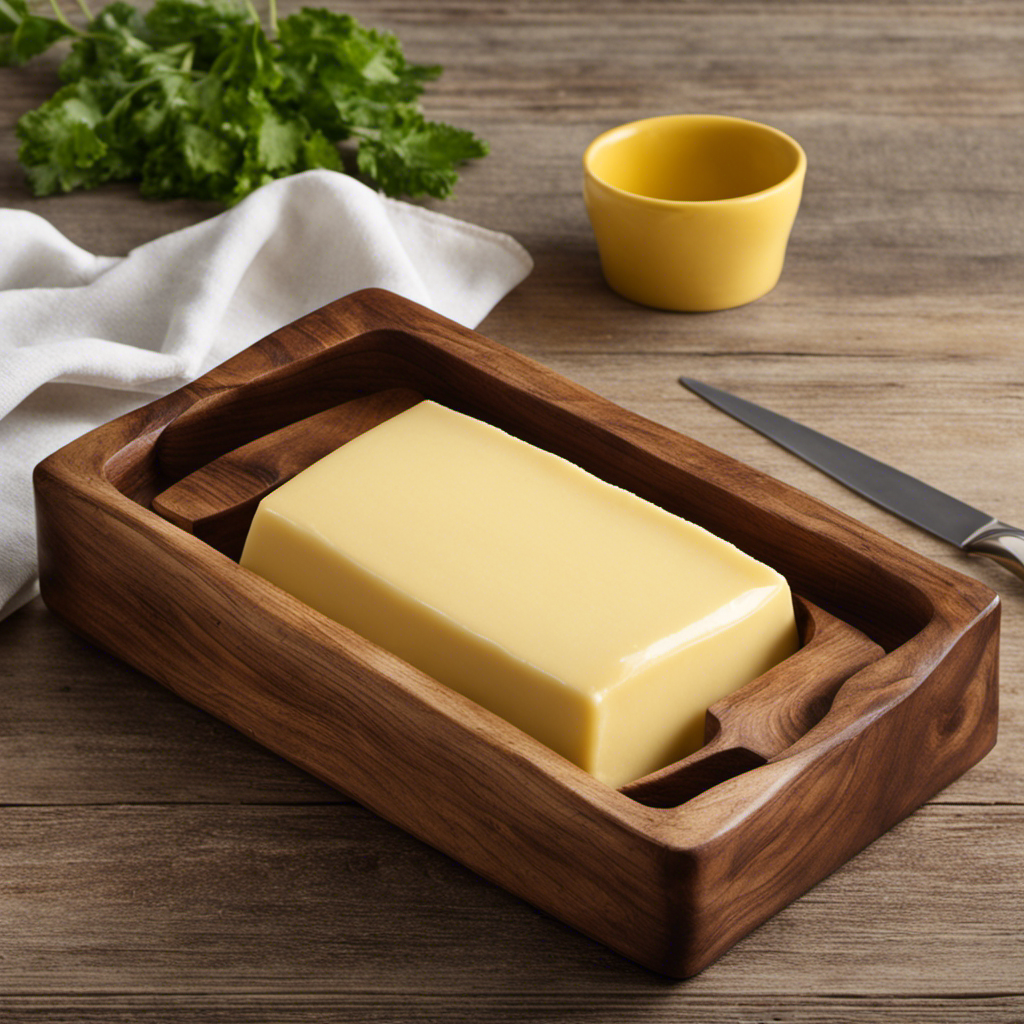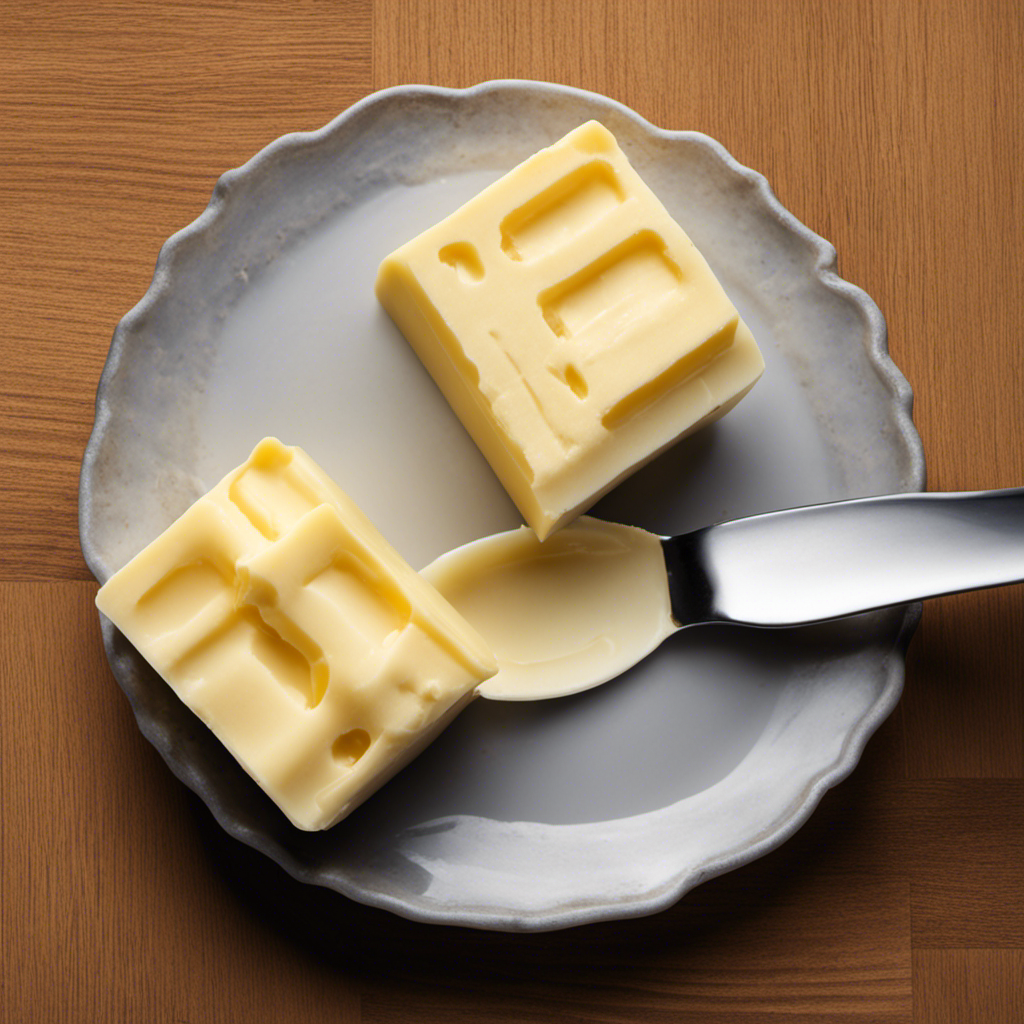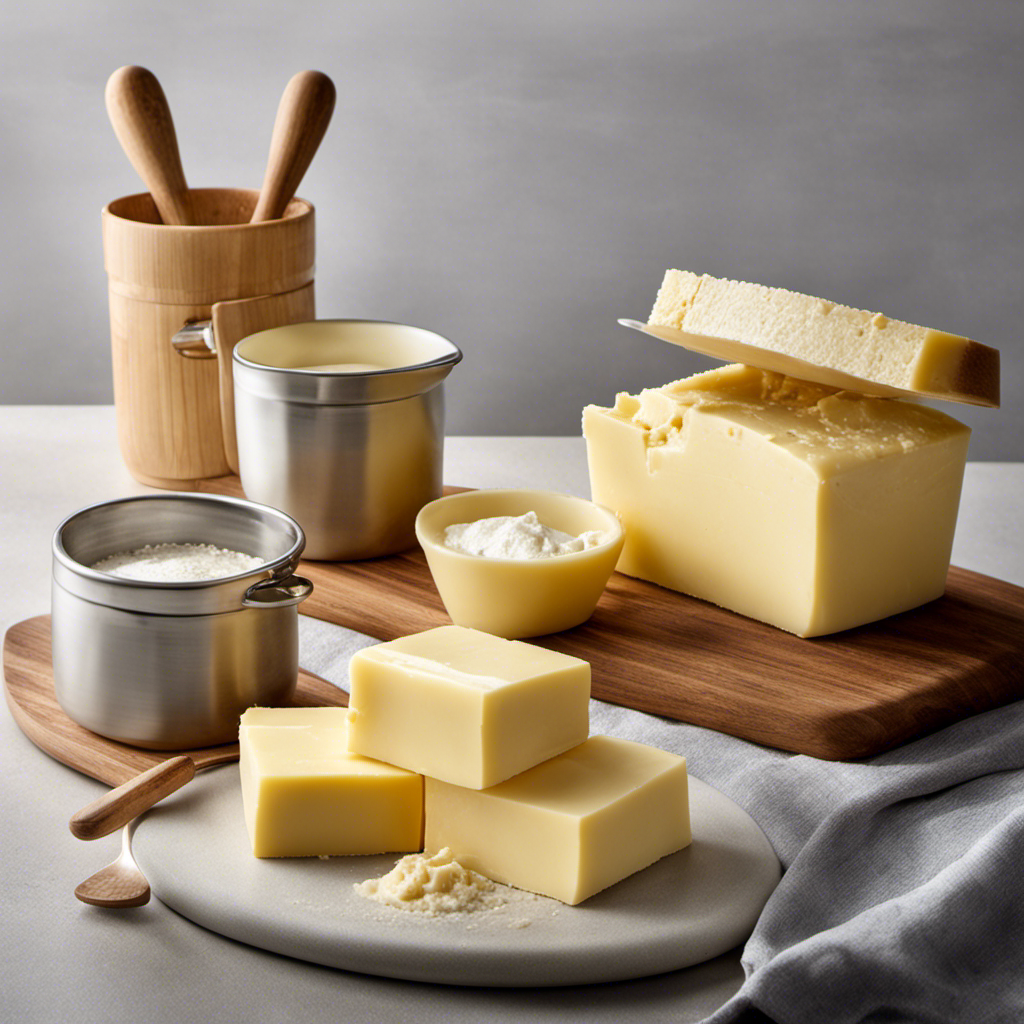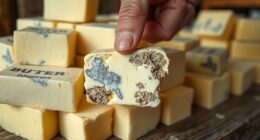I’m here to clarify the perpetually perplexing query: how many ounces does a cup of butter weigh?
Just like a culinary compass pointing the way, this article will guide you through the ins and outs of converting measurements and adjusting butter quantities in your recipes.
With precise and scientific information, along with a few neat tricks, you’ll be able to measure your butter with ease and accuracy.
So, let’s dive in and unravel the mystery of butter measurements!
Key Takeaways
- Ounces are commonly used for liquid ingredients in the culinary world.
- Cups are typically used for dry ingredients.
- There are 8 fluid ounces in a cup.
- Accurate butter measurements are crucial for achieving the desired outcome in baking.
Conversion Factors: Understanding the Measurements
To understand the measurements, you’ll need to know the conversion factors for different units of measurement. When it comes to measurement conversions in the kitchen, it is essential to be aware of common kitchen measurements.
One common conversion is between ounces and cups. In the culinary world, ounces are often used to measure liquid ingredients, while cups are commonly used for dry ingredients. To convert from ounces to cups, you need to know that there are 8 fluid ounces in a cup. This means that if a recipe calls for 16 ounces of liquid, you would need 2 cups. Similarly, if a recipe calls for 4 cups of flour, you would need 32 ounces.
Understanding these conversion factors will help you accurately measure ingredients in your culinary endeavors.
Butter Measurements: Cups to Ounces
There’s no standard measurement for a cup of butter, but it typically equals 8 ounces. When it comes to butter measurement equivalents and butter measurement conversions, it’s important to understand the relationship between cups and ounces.
In baking, precise measurements are essential to achieve the desired outcome. Accurate butter measurements can make or break a recipe, affecting its taste, texture, and consistency. Using too much or too little butter can throw off the balance of ingredients and result in a less than perfect final product.
Whether you’re using a digital kitchen scale or measuring cups, it’s crucial to ensure that you’re following the recipe’s instructions accurately. Now, let’s explore the importance of accurate measurements in baking and how they can affect the outcome of your delicious creations.
The Importance of Accurate Measurements in Baking
Accurate measurements are crucial in baking as they can greatly impact the final outcome of your delicious creations. Precision plays a significant role in achieving the perfect texture, flavor, and overall quality of baked goods.
When it comes to measuring butter, there are common mistakes that can lead to inaccurate results. One such mistake is not using the correct measuring method. Many recipes call for softened butter, which means it should be at room temperature. However, some bakers mistakenly measure cold butter instead, resulting in an incorrect measurement.
Another mistake is not using the correct measuring tool. Using a liquid measuring cup instead of a dry measuring cup can lead to errors in the amount of butter used.
To ensure accuracy, it is important to follow the recipe’s instructions precisely and use the appropriate measuring tools.
Converting Recipes: Adjusting Butter Quantities
When converting recipes, you’ll need to adjust the quantity of butter to ensure the right balance of flavor and texture in your baked goods. Butter plays a crucial role in baking, providing moisture, tenderness, and flavor. However, different recipes may call for varying amounts of butter, depending on the desired outcome.
To adjust butter quantities, you can use alternative measurements such as tablespoons or grams instead of cups. This allows for more precise and accurate adjustments, ensuring that your baked goods turn out perfectly every time. It’s important to follow a reliable conversion chart or calculator to determine the correct amount of butter needed for your specific recipe.
Tips and Tricks for Measuring Butter
Measuring butter accurately can be made easier by using the pre-marked measurements on the wrapper.
When it comes to measuring techniques, it is important to remember that butter is typically sold in sticks, with each stick weighing 4 ounces or 113 grams. The wrapper of a stick of butter often has markings indicating measurements for each tablespoon or quarter cup. These markings can be very helpful in ensuring precise measurements for your recipes.
However, it is crucial to avoid common mistakes such as using softened or melted butter when a recipe calls for solid butter, as this can lead to inaccurate measurements and affect the final outcome of your dish.
Frequently Asked Questions
Can I Use Margarine Instead of Butter in Baking Recipes?
Yes, you can substitute margarine for butter in baking recipes, including cookies. However, keep in mind that margarine has a slightly different taste than butter. Experiment to find your preferred flavor.
How Can I Measure Butter if I Don’t Have a Measuring Cup?
To measure butter without a cup, you can use a kitchen scale to weigh it in ounces. To convert butter measurements, 1 cup is equal to 8 ounces or 2 sticks of butter.
Can I Use Butter Sticks Instead of Measuring Cups?
Yes, butter sticks can be used as a substitute for measuring cups. To determine the conversion, consult a butter conversion chart. It provides precise measurements in ounces for different quantities of butter.
How Do I Convert Butter Measurements From Ounces to Grams?
To convert butter measurements from ounces to grams, you can use the conversion formula: 1 ounce = 28.35 grams. This will help you accurately measure the amount needed in your recipe. As for substitutes, you can use margarine or coconut oil.
Are There Any Alternative Ingredients to Butter That I Can Use in Baking Recipes?
Dairy-free alternatives for baking recipes include coconut oil, applesauce, and avocado. Healthier substitutes for butter in baking can be olive oil or Greek yogurt. These ingredients can provide similar texture and taste while reducing saturated fat content.
Conclusion
In conclusion, understanding the conversion factors and accurate measurements of butter is crucial for successful baking.
With precise knowledge of how many ounces are in a cup of butter, you can confidently adjust recipes and create mouthwatering treats.
Remember, measuring butter is a science, and even the slightest miscalculation can lead to disastrous results.
So, arm yourself with the necessary tips and tricks, and let your baking prowess shine with perfectly measured butter.
Happy baking!
